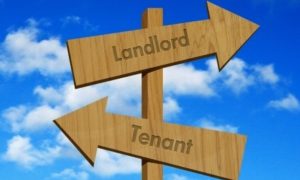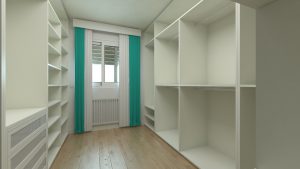Matt Stevens is the director at mortgage broker The Mortgage Genie. Here, he shares the key things landlords-to-be should know about buy-to-let mortgages.
Buy-to-let (BTL) mortgages have fluctuated for quite some time, and with the recent increase in Stamp Duty Land Tax reaching 3%, it’s clear that times are tough for the BTL property market. However, with fewer properties being bought and let out, landlords are actually seeing some benefits from the market, with a recent report showing that rents are set to rise by 15% in 2023 (Moneywise). This could mean those willing to take on the current risk are likely to see some impressive returns on their investment.
While you’ll need to consider the areas with potential for growth and popularity, you’ll also need to be thinking about how to mortgage these BTL properties. Here, I’ll be sharing what you’ll need to know about these, including how to choose the best type for you.
How do BTL mortgages work?
In most areas, BTL mortgages function like their residential equivalents: they allow you to buy property with a view to rent it out, without needing to save up many thousands of pounds to buy the home outright. Once your mortgage has been accepted, you’re then obliged to let out the property, taking on the role of the landlord by charging rental payments to cover the mortgage and other costs of maintaining the property. You need to ensure that you’ll make enough in rent to cover these and still make a healthy return on your investment.
Who can get a BTL mortgage?
Much like ordinary mortgages, there are some criteria you must meet in order to qualify for a BTL mortgage. While these may differ for each lender, ultimately your application will only be accepted if they think you can afford the repayments on it. They will base this judgement on two things: how much rental income you will make from the property and your broader financial situation. Both can affect how much money they will agree to lend to you, as well.
- Age: Some lenders may impose upper age limits — in some cases, you aren’t allowed to be older than 70 or 75 when the mortgage ends and sometimes there is a minimum age of 25 years old imposed as well.
- Salary: Your income should be around £25,000 per year. However, this may differ depending on the lender.
- Deposit: The deposit for BTL is usually between 20–40%, but the more you’re able to put down, the better in the lender’s eyes.
- Homeowner: You will need to own a home already, whether you’ve paid off your mortgage, or are still repaying it.
- Expected rental income: Your rental income will usually need to be at least 125% of your mortgage repayments. The lender will calculate this by looking at the average rents for similar properties in the same area.
- Credit history: You’ll need a good credit history and you should be willing to disclose information about your outgoings and any existing debts.
What BTL mortgage options are available?
Most mortgage options are available for BTL. In general, this offers four options:
- Fixed-rate: Mortgage interest rates are susceptible to change, meaning there could be some expenses you won’t be able to prepare for. Fixed-rate mortgages are a way of ensuring you pay the same amount each month until the fixed-rate period ends.
- Standard variable rates (SVR): Unlike fixed rate, SVR can change at any time.
- Tracker rate: This will rise and fall with index changes, such as the Bank of England base rate.
- Discount rates: These offer a discount on a certain interest rate, like the lender’s SVR. This could be just an introductory offer, or it could last for the complete lifespan of the mortgage.
In addition to choosing between these types, you’ll also need to think about how you will pay off your mortgage. There are two options to can choose from to suit your circumstances:
- Repayment mortgages: This will include paying monthly instalments which covers a proportion of the capital borrowed as well as the interest accrued on this. This will reduce the balance of your mortgage until it’s completely paid off and you own the property outright. However, do be aware that this means your monthly outgoings will be higher, and so your profits will be smaller.
- Interest-only mortgages: Any money you pay towards these will go towards the interest on your repayments, but the amount you owe for your mortgage won’t decrease. You’ll need to pay this balance off separately at the end of the term. This is a better option for those looking to keep their monthly costs down but is seen as higher risk to both lender and borrower. You’ll need to have a plan in place to cover the remaining balance, even if the property decreases in value.
If you’re struggling to assess which is the right type of BTL mortgage for you, I recommend consulting a mortgage broker who can help you choose which is suitable for you and your financial situation.
How much do BTL mortgages cost?
If you’re considering a BTL mortgage, you’ll need to consider the costs that come with it. On top of the typical costs you need for buying a property yourself, such as the house price and deposit, there are also the valuation and survey fees. The lender will also charge an admin and arrangement fee.
However, some of these costs will be higher than they would on a typical mortgage. For example, the deposit you need to put down is at least 25% of the property (and sometimes more) compared to the typical 10% for a residential property. Additionally, you will have to pay stamp duty on any property worth £40,000 that you don’t intend to be your main home, which is typically higher for BTL. So, it’s key that you think about these before you buy, along with the costs of renovation, maintenance and paying letting agents for advertising and managing your tenants for you.
What is buy-to-let tax relief?
Historically, private landlords have been able to take advantage of significant tax relief by deducting the interest paid towards the mortgage from their rental income before tax. However, with new rules coming in at the start of the 2017–2018 tax year, the amount of interest you’re allowed to deduct from the rental income will decrease by 25%. Over the next few years, this tax relief will continue to drop until it reaches 0%.
Nevertheless, the relief awarded to private and individual landlords is still currently a bonus, so there’s never been a better excuse to get on board with BTL before the changes reach completion.
Hopefully, my introductory guide has answered all your basic BTL mortgage questions, so you can focus on starting a rental property portfolio and financing your future. Good luck!


